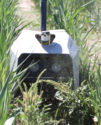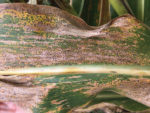Advertise Follow Us
Dan Crummett
Dan Crummett has more than 40 years in regional and national agricultural journalism including editing state farm magazines, web-based machinery reporting and has a long-term interest in no-till and conservation tillage. He holds B.S. and M.S. degrees from Oklahoma State University.
ARTICLES
Beck’s closing wheel study shows a quick ROI for using aftermarket closers, but one company analyst says closing wheels are the low-hanging fruit in improving planter performance.
Read More
No-Till Pests – Part 2
Scout for Black Cutworm Early & Often to Prevent Outbreaks in No-Till Corn
Black cutworm moths reproduce on overwintering vegetation & residue, producing larvae that feed on emerging corn & soybeans.
Read More
Ahead of the Curve
Robot Weeders Provide Lower Costs & Higher Crop Prices
Swarms of robotic weeders offer herbicide-free weed control & food-grade traceability.
Read More
Deep-Dive Microbe Soil Testing Improves Farm Returns
Consultant-based testing facility enables no-tillers growing corn & soybeans to make informed choices in combatting soil-borne pathogens by sequencing DNA of entire microbial population of topsoil.
Read More
Ahead of the Curve
Killing Weeds Without Hoes & Chemicals
Carbon Robotics’ LaserWeeder eliminates hand labor & chemical use in high-value crops with technology that could fight Palmer amaranth & marestail in commodity crops.
Read More
Deep-Dive Microbe Soil Testing Improves Farm Returns
Consultant-based testing facility enables no-tillers growing corn & soybeans to make informed choices in combatting soil-borne pathogens by sequencing DNA of entire microbial population of topsoil.
Read More
No-Till, Conservation Practices Boost Bottom Line with 34% ROI
No-till newcomer sees agronomic results, reduced erosion & research to prove parking the plow improves his bottom line.
Read More
15TH ANNUAL NO-TILL OPERATIONAL BENCHMARK STUDY
Highly Experienced No-Tillers Reveal Most Popular Management Strategies
Respondents to the 15th No-Till Operational Benchmark Study matched last year’s record-high corn yield at 185 bushels per acre, ended 2022 profitable & reported record cover crop usage.
By Dan Crummett
posted on
February 21, 2023
Read More
Combat Tar Spot with Tolerant Hybrids, Timely Fungicide Applications
Researchers say the fungal corn disease tar spot is a complex of related organisms, rather than a single culprit, that cost yield losses of up to 60 bushels per acre.
Read More
Ahead of the Curve
Section Chemical Injection Enables Precision Chemical Application
Latitude-AG’s retrofit SRV2 Boom Section Injection & Recirculation System reduces chemical waste & water usage.
Read More
Top Articles
Current Issue
No-Till Farmer
Get full access NOW to the most comprehensive, powerful and easy-to-use online resource for no-tillage practices. Just one good idea will pay for your subscription hundreds of times over.
Soil Health Principle 4: Continual Living Plant
Regenerating Your Profits: No-Till, Covers & Livestock
Good or Bad, We’re in for Some Interesting Times for Conservation Ag
Must Read Free Eguides
Download these helpful knowledge building tools
- How Beneficial Insects, Pollinators Can Boost No-Till Resilience
- How No-Till Improves Your Land Value
- 5 Pillars for No-Till Farming Effectively, Efficiently
- Making the Precision Basics Even Better with Implement Guidance
Videos
Farmer Shares Formula for Better No-Till Corn Emergence
On this episode of Conservation Ag Update, brought to you by Yetter Farm Equipment, longtime no-tiller Ross Bishop shares some of the keys to achieving even corn emergence with no-till.
Events
Conservation in Action Tour 2025 -- Sioux Falls, S.D.
Date: 05/06/25
Location:
View Event
Top Directory Listings
Needham Ag Technologies, LLC
Needham Ag understands the role of technology in making better use of limited resources within a specific environment by drawing on a wealth of global experience to overcome the challenges facing today's farmers, manufacturers and dealers.
Titan International, Inc
Titan offers a full line of wheels, tires and undercarriage products for a wide variety of off-the-road equipment.
The Andersons PureGrade
The Andersons grows enduring relationships through extraordinary service, a deep knowledge of the market, and a knack for finding new ways to add value as we have done for nearly 70 years.















